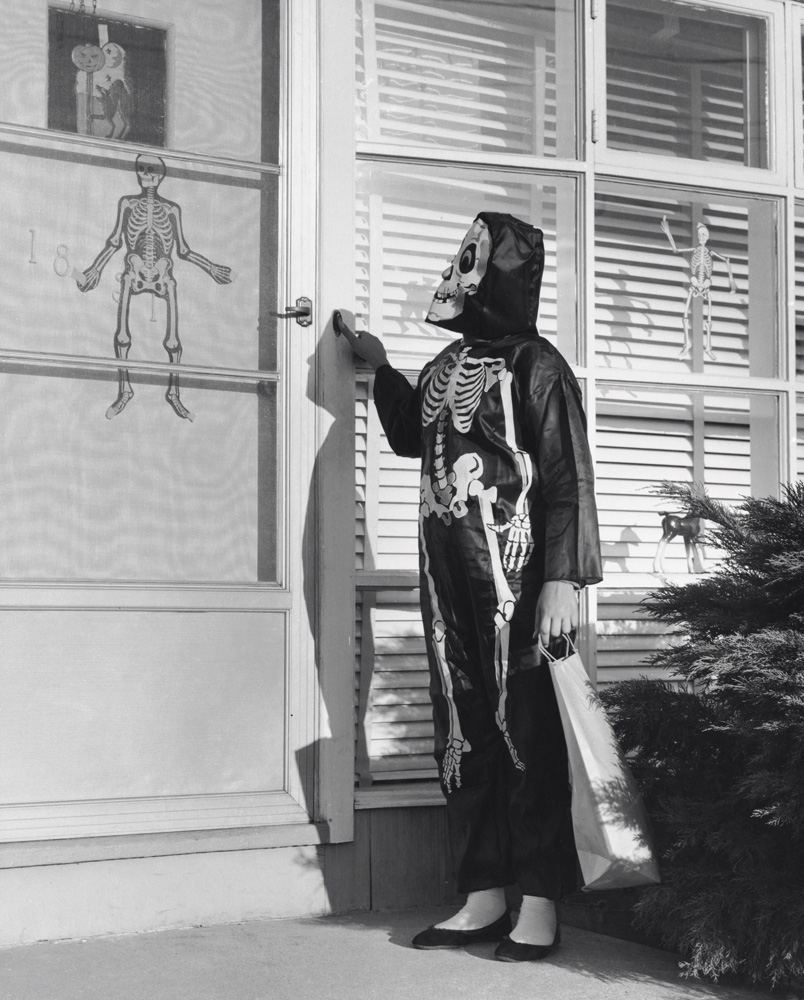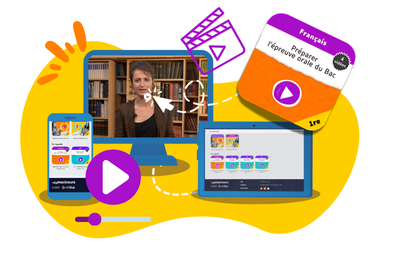Halloween- Seconde- Anglais
- Fiche de cours
- Quiz et exercices
- Vidéos et podcasts
Druidic priests regarded the day as the end of the old year and the beginning
of the new.
October 31st was also the day of
Samhain, a
festival for honouring
the dead. The ancient Celts feared the time
after nightfall on this day because they believed that
evil spirits were
allowed to roam the earth. In order to appease these
wandering spirits, the Celtic priests held fire rites in which they burned
sacrifices, made
charms and cast spells.
Portions of the Celtic beliefs passed into Christian culture after the Romans conquered the Celts and Catholic Rome tried to bring the pagan Celts into the "Christian fold".
A few centuries later, the church moved their All Saints' Day (a holiday for honouring the Christians who had died for their beliefs) from a day in May to November 1st, associating it with the old Druid death ritual of October 31st.
Now in Britain and America, it is a time when children have parties, dress up as witches, make lanterns out of pumpkins from which the inside has been removed and play "trick or treat". This is a traditional activity at Halloween, in which children dress in costumes and visit houses. At each house they say: "Trick or treat". This means that they will play a trick, or joke, on the people in the house unless they are given a "treat" (money, sweets, etc...). Most people prefer to give treats rather than having tricks played on them.

|
| Doc. Trick or treat |

Des quiz et exercices pour mieux assimiler sa leçon
La plateforme de soutien scolaire en ligne myMaxicours propose des quiz et exercices en accompagnement de chaque fiche de cours. Les exercices permettent de vérifier si la leçon est bien comprise ou s’il reste encore des notions à revoir.

Des exercices variés pour ne pas s’ennuyer
Les exercices se déclinent sous toutes leurs formes sur myMaxicours ! Selon la matière et la classe étudiées, retrouvez des dictées, des mots à relier ou encore des phrases à compléter, mais aussi des textes à trous et bien d’autres formats !
Dans les classes de primaire, l’accent est mis sur des exercices illustrés très ludiques pour motiver les plus jeunes.

Des quiz pour une évaluation en direct
Les quiz et exercices permettent d’avoir un retour immédiat sur la bonne compréhension du cours. Une fois toutes les réponses communiquées, le résultat s’affiche à l’écran et permet à l’élève de se situer immédiatement.
myMaxicours offre des solutions efficaces de révision grâce aux fiches de cours et aux exercices associés. L’élève se rassure pour le prochain examen en testant ses connaissances au préalable.

Des vidéos et des podcasts pour apprendre différemment
Certains élèves ont une mémoire visuelle quand d’autres ont plutôt une mémoire auditive. myMaxicours s’adapte à tous les enfants et adolescents pour leur proposer un apprentissage serein et efficace.
Découvrez de nombreuses vidéos et podcasts en complément des fiches de cours et des exercices pour une année scolaire au top !

Des podcasts pour les révisions
La plateforme de soutien scolaire en ligne myMaxicours propose des podcasts de révision pour toutes les classes à examen : troisième, première et terminale.
Les ados peuvent écouter les différents cours afin de mieux les mémoriser en préparation de leurs examens. Des fiches de cours de différentes matières sont disponibles en podcasts ainsi qu’une préparation au grand oral avec de nombreux conseils pratiques.

Des vidéos de cours pour comprendre en image
Des vidéos de cours illustrent les notions principales à retenir et complètent les fiches de cours. De quoi réviser sa prochaine évaluation ou son prochain examen en toute confiance !









